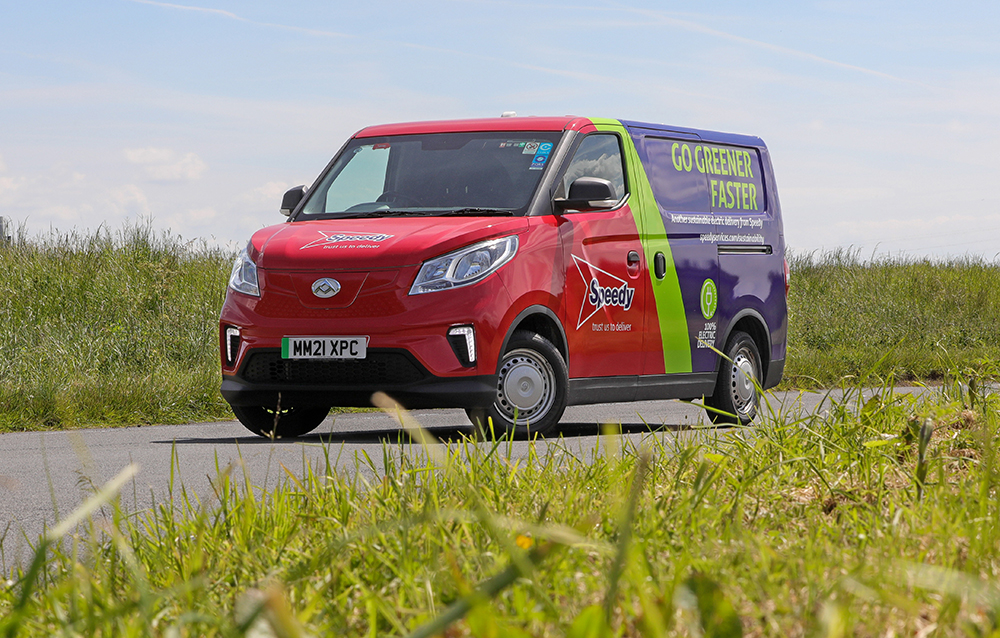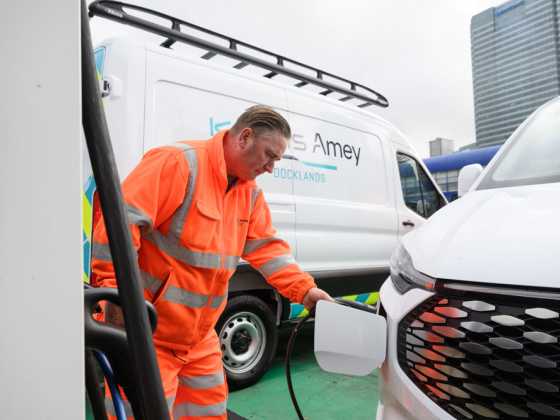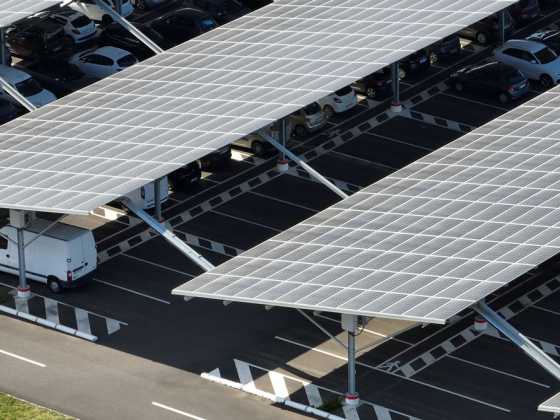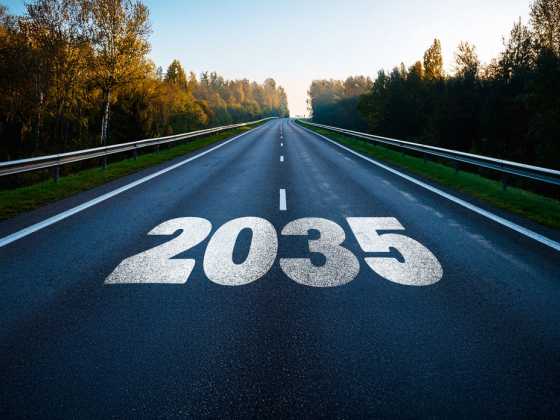Sharing lessons-learnt

Many fleets have overcome cost and infrastructure hurdles to ensure fleet electrification success. We speak to some of our GreenFleet Award winners to gain insight into their fleet electrification journey and share their lessons learnt
Fleet and business buyers were responsible for the lion’s share of battery electric vehicles in 2022, accounting for two thirds of all battery electric vehicle (BEV) registrations and 74.7 per cent of the volume gain in 2022. This shows that fleets and businesses are driving the UK’s electrification uptake. But it’s safe to say that many of these fleets would have faced challenges in their electrification journey.
With the target to phase out new petrol and diesel vehicles by 2030, plus many companies working within clean air zones, the argument to go electric is strong. While vehicle ranges have improved – and range anxiety is taking up less of the conversation, the focus is now shifting to charging infrastructure – with many fleet managers now having to become energy and electrical experts to ensure their charging requirements are met.
Fleet operators must understand their power usage and how much electricity is available at their site to find out if there will be enough power for their charging requirements. This can be found out from the distribution network operator (DNO) but can be an administrative burden. Site locations and gaining landlord persmissions can also delay plans.
Space and power
Aaron Powell, fleet director at Speedy Services won the Private Sector Fleet Manager of the Year Award at the GreenFleet Awards 2022. Speedy has a number of electric vans in operation or on order, as well as two zero-emission FUSO eCanters, as well as chargers at over 10 sites, with a plan to have them in every location by the end of 2023.
But there were difficulties in getting the charging infrastructure to house enough vehicles, in terms of both space and power supply. Aaron Powell explains: “The biggest challenge when adopting EVs was installing the infrastructure as we don’t own our sites. Gaining permission from our landlords was a barrier, but also the location of our branches, such as our central London site. The site is under the railway arches and is difficult to have enough charge points for the number of vehicles we have there.”
Fast moving technology
GreenFleet Award winner Nottingham City Council started its fleet electrification in 2016 and has continued to push the boundaries in terms of what is possible with its 475-strong municipal fleet containing multiple specialist vehicles. The council now has 243 electric vehicles, including an electric minibus, sweeper, cage tipper and refuse collection truck. The council has also invested in other innovations, including the UK’s first publicly-funded EV-only vehicle maintenance workshop, and has recently gone live with a project to create an ecosystem for charging which includes bi-directional EV charging, solar and battery energy storage.
Matt Ralfe, innovation and change manager at Nottingham City Council shares what he wish he knew before embarking on the council’s fleet electrification: “With technology moving so fast, there is limited value in planning the “end game”. Focussing on the vehicles/chargers/maintenance required to deliver a fully electric fleet will mean you spend less time delivering change today, and with a standard fleet lifespan of seven to nine years, the majority of your plan will be outdated and overtaken by improved technology when you come to deliver it.”
Matt explains how vehicle availability was a big challenge for the council. He explains: “Bearing in mind we started our fleet electrification in 2016, vehicle availability has been our biggest issue. Both in terms of vehicle types not being developed yet (hence why we have the UK’s first EV sweepers, cage tippers, minibuses and RCVs) and also for delivery. This meant that the capital expenditure was committed but it would be a year before we started generating operational savings and learning.”
And when asked what piece of advice he would give to fleets starting their EV journey, Matt said to start small and start now. He explains: “The learning we get from the first few vehicles of each type we’ve bought has been invaluable in instructing how we implement more of those vehicles. The more EVs you own, the easier it is to adopt others – from business case, procurement and charging infrastructure through to driver buy-in and maintenance – all become simpler when you have EVs on fleet to use as evidence.”
Don’t get caught in the rush
Mitie was awarded the Private Sector Car Fleet of the Year accolade at the 2022 GreenFleet Awards for consistently exceeding its emission-reduction targets. Mitie’s fleet has around 2,643 electric vehicles, making it one of the largest pure electric fleets in the UK. Mitie’s EVs prevent 15,858 tonnes of carbon from polluting the environment annually.
In its decarbonisation insights paper: Net Zero Navigator 2023, Mitie warns that tardy organisations will get stuck in the electric vehicle fleet rush, and offers the following advice: “As everyone enters the race to decarbonise fleets before the government’s ban on the sale of new petrol and diesel cars is introduced in 2030, organisations must act fast. Organisations should plan for the EV transition now to secure a grid connection and ensure adequate charging infrastructure can be installed.”
EV efficiency
According to the Association of Fleet Professionals (AFP), fleets are starting to pay more attention to the efficiency of different electric vehicles thanks to increases in the cost of charging.
Paul Hollick, chair at the AFP, explains: “When EVs started arriving on fleets, fuelling them cost just a fraction of a petrol or diesel vehicle, so there was relatively little attention paid to which had the best miles per kWh figures. However, the price rises seen in the last year or so, with some on-the-go charging costing as much as refuelling an ICE car or van, means that is no longer the case.
“Increasingly, fleets are taking a lot of notice about which EVs are the most efficient, They are spending time analysing which fall within reasonable parameters and which don’t in exactly the same way as they have done with ICE cars for many years. That means working out whether the problem lies with the vehicle, the route or the driver – and taking appropriate managerial action.”
Paul said that fleets were even starting to remove EVs with the worst figures from choice lists and sometimes incentivising drivers to choose the most efficient options.
“It’s widely reported that some widely-used EVs are struggling around the two miles per kWh mark while competing cars can deliver almost twice that figure. These are significant differences that, with current electricity pricing, can have a genuine effect on running costs.
“Certainly, some manufacturers are starting to get reputations for EV efficiency while others are seen as the opposite, and choice lists are being modified accordingly.
“Of course, efficient EVs also make AER repayments more realistic, with the new nine pence per mile rate much closer to the amount being paid by drivers of more efficient EVs who charge at home.”
Fleet challenges
Northgate has surveyed over 60 van operators who attended its recent EV open days and found that there is still a lot of basic education that is needed from fleets looking to electrify.
Operators admitted that understanding more about how electric vehicles work, their range, costs, performance and drivability when compared with a diesel was their number one challenge.
The second challenge was knowing where to start with workplace and employee home charging to optimise their vehicles and drivers, mainly because of a lack of data.
The third challenge was was coming to terms with the different vehicle charger types available, including AC and DC, vehicle charging speeds and driver reimbursement for home charging.






